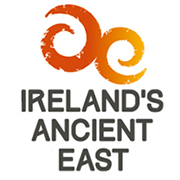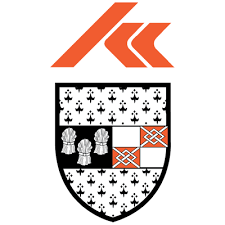The Great War Memorial
As the Great War rumbled into it’s fourth year, a youngster named Tommy Woodgate from Callan Co. Kilkenny joined the efforts, enrolling with the Royal Flying Corps. Just 32 days before the Armistice brought an end to hostilities, Tommy was returning to duty, on board the RMS Leinster at Dún Laoghaire bound for Holyhead. 16 miles into the journey the ship was decimated by 3 torpedos , 501 people perished including Woodgate whose body was never recovered. He was 14 years old.

Birth certificate of Thomas Woodgate
Nestled into the landscape on the banks of the river Nore sits proud and dignified the Kilkenny World War 1 Memorial. Unveiled in 2018 by the collaboration and community involvement between Kilkenny County Council and The Kilkenny Great War Memorial Committee this memorial commemorates over 800 men and women from the County of Kilkenny who died in World War 1 1914-1918. Engraved in tablets of Kilkenny Limestone on a natural stone wall looking out on the famous landmarks of Kilkenny city are the names of those who fought for the rights of small nations like ours. In the centre of the memorial stands a Soldier in repose, paying respect to his dead colleagues, amongst them – Tommy Woodgate, now officially Ireland’s youngest Great War soldier to die in active service.
A sister memorial containing over 3,129 names of all those who participated in World War 1, those who survived and the War Dead, from the County of Kilkenny is situated on Platform 1 at MacDonagh Station, Dublin Road, Kilkenny. Placed in an alcove on the very platform where many stood to take the train to the front, it serves a reminder to all of us the sheer sacrifice the County made in answering the call to fight for freedom and peace in their time.
The limestone Memorial is located at the Peace Park on John’s Quay in the city.
The Famine Experience
Kilkenny Union Workhouse, adjacent to Kilkenny Train Station is home to the beautifully restored as MacDonagh Junction Shopping Centre. Behind the stone walls lie secrets and tragedies, with heartbreaking and poignant human stories uncovered during the excavations. The unexpected discovery of over 970 human remains of Irish Famine victims in 2005 hs been described as the most significant discovery in the world relating to the Irish Famine. These remains led to groundbreaking osteo-archaeological insights into the influencing factors that made some survive and more perish in 1840’s Ireland. This enlightening self guided audio tour gives a gritty depiction of a dark period in Ireland’s history.
The Famine Experience Tour presents life from the perspective of the Workhouse inmates and staff. Learn about the ground-breaking research carried out in the wake of such a discovery. Visit the final resting place of these victims and pay respect to their memory at the award winning beautiful bronze sculpture commissioned in their memory. As the tour unfolds, meet the young Saul brothers, John and Patrick who sought refuge in the Workhouse in 1842 after being abandoned by their parents on the docks in Dublin. This tour is a must.







